Abstract
Fluency is a metaphor for flowing, effortless, well-practiced, and accurate performance. Current practice in fluency building involves increasing the frequency of free-operant performances. Free-operant performance is defined as continuous responding in the presence of discriminative stimuli that are either varied or not varied from response to response. Free-operant performance is also distinguished from discrete-trial performance. Frequency-building procedures are also described, including defining the learning channel and stimulus control topography of a component performance (called a pinpoint), selecting an appropriate timing period, and displaying stimuli so that no performance ceilings occur. During frequency building, frequencies of pinpoints are continuously charted on standard celeration charts. Frequencies are increased to empirically derived performance standards, or aims, that predict retention, endurance, stability, application, and adduction of performance. Frequency is also described as a dimension of performance, not simply its measurement. Frequency building is described as possibly facilitating contingency adduction.
Keywords: fluency, free operant, frequency building, contingency adduction, performance standards, component-composite analysis
Full text
PDF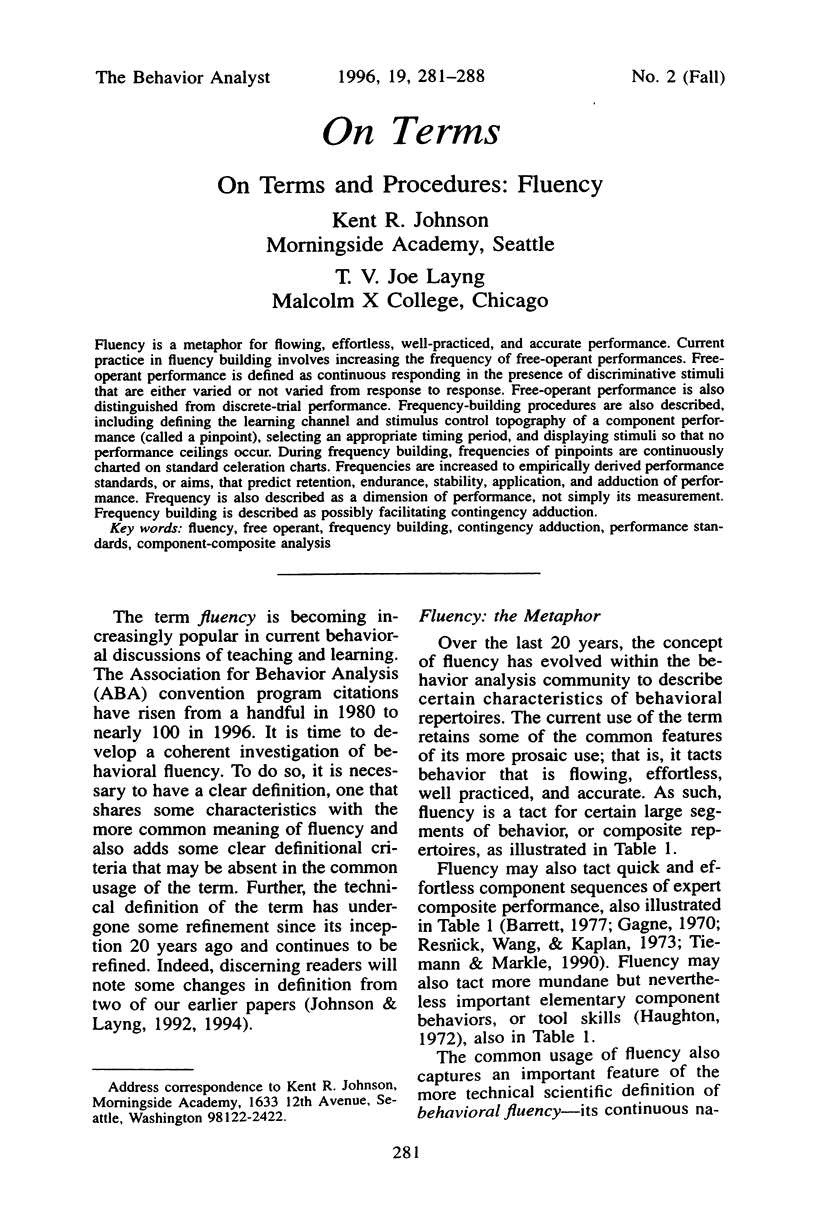

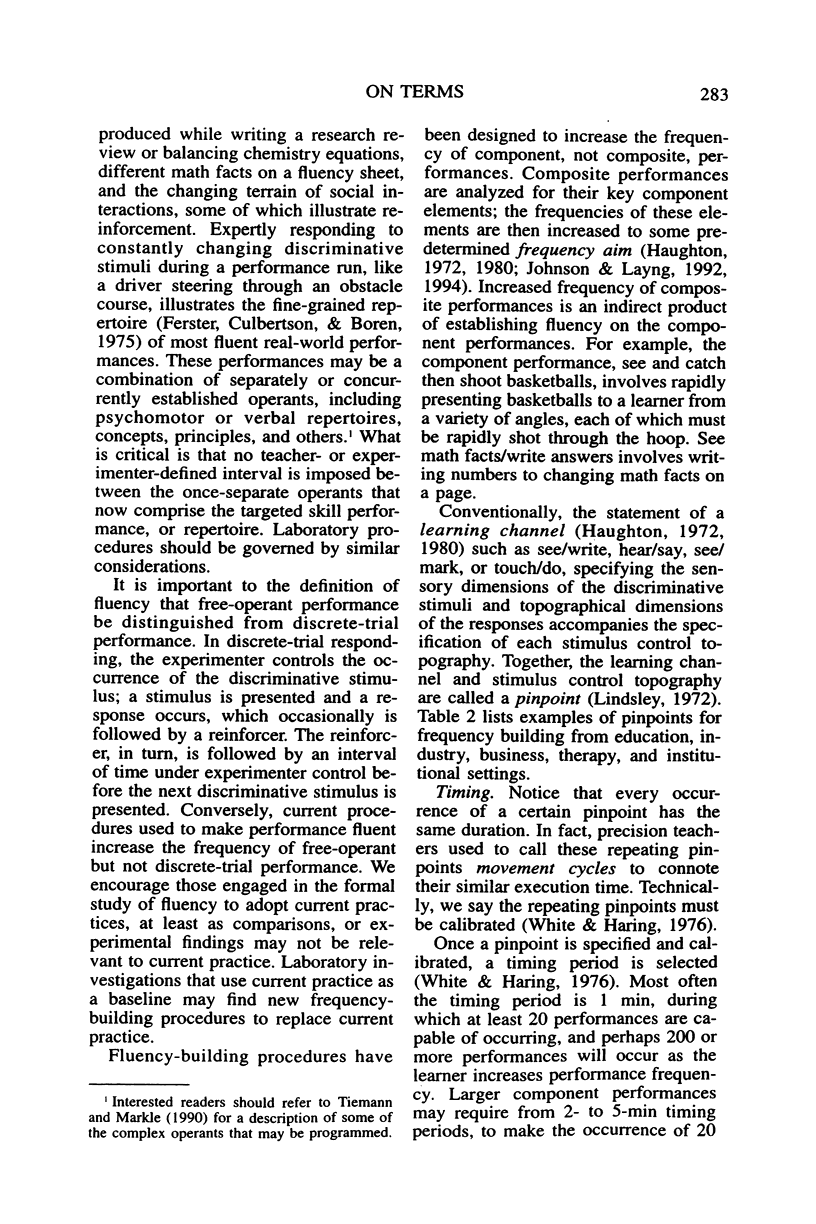
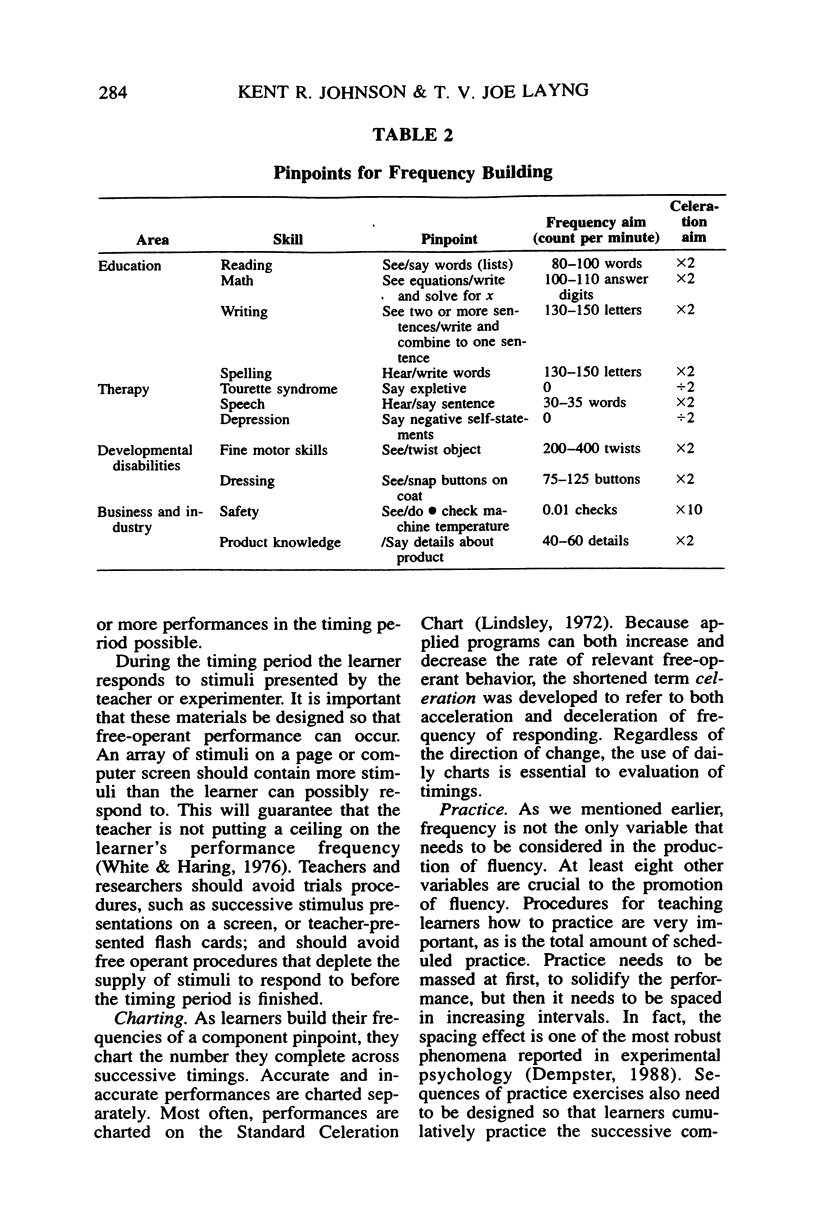
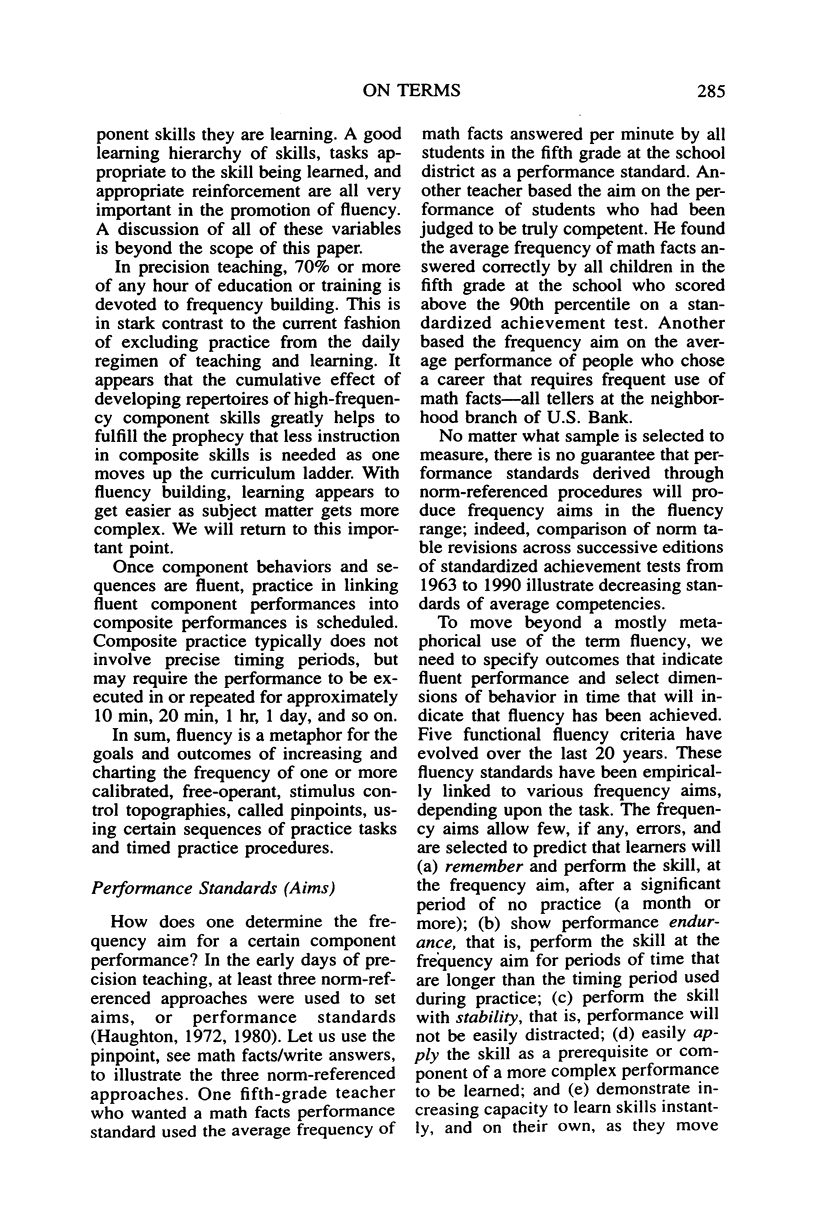
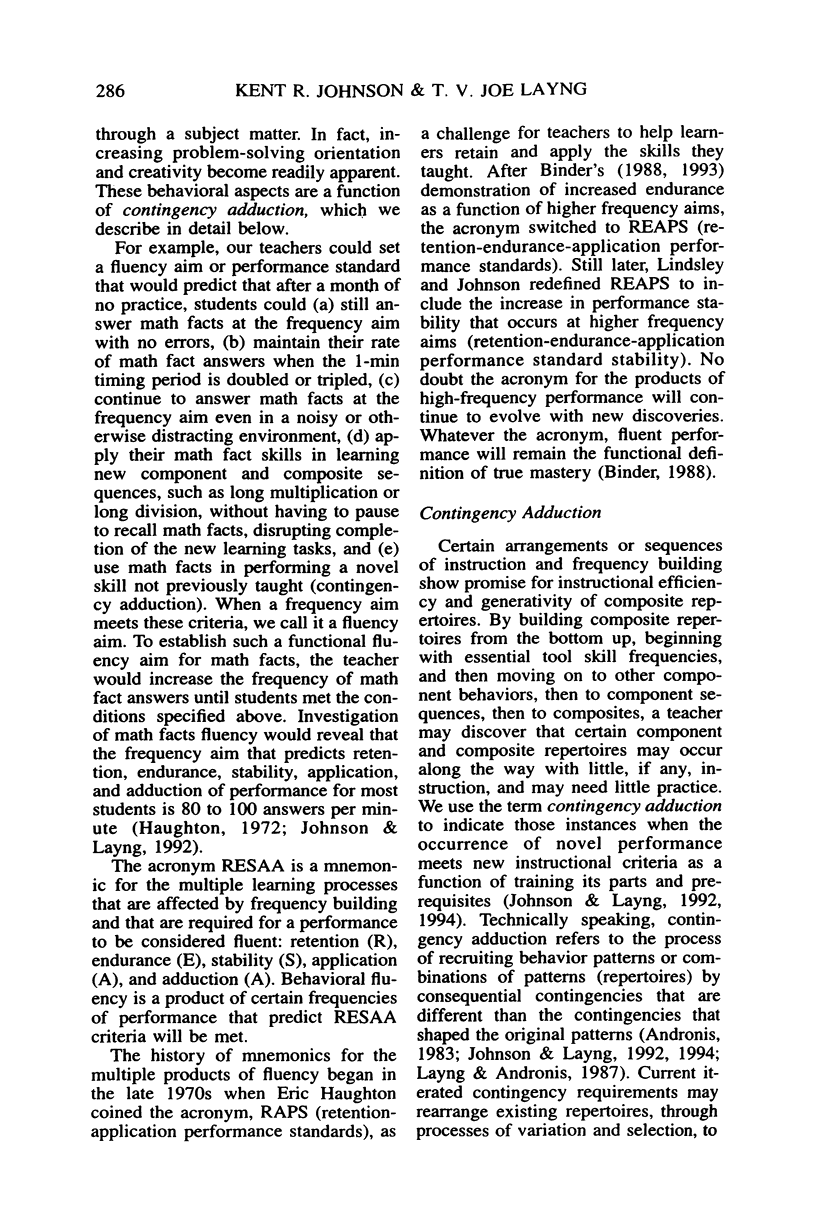
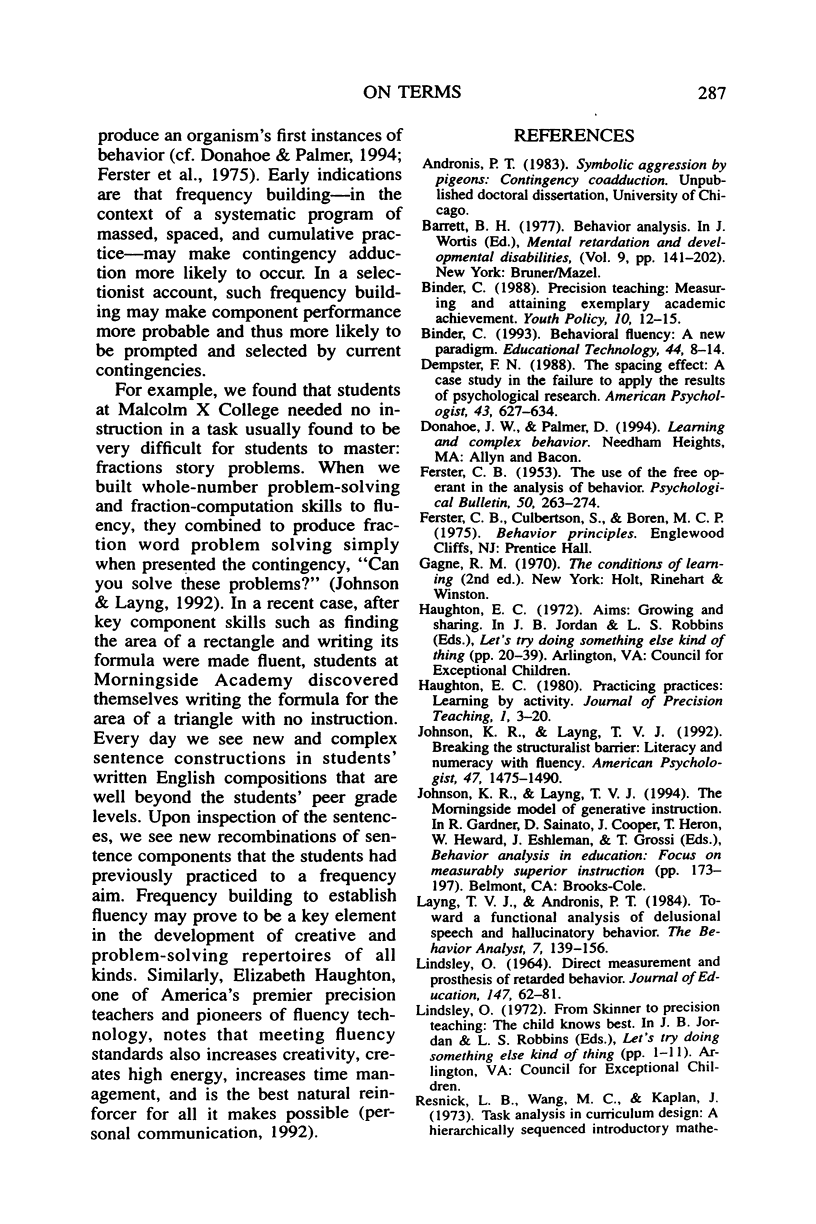
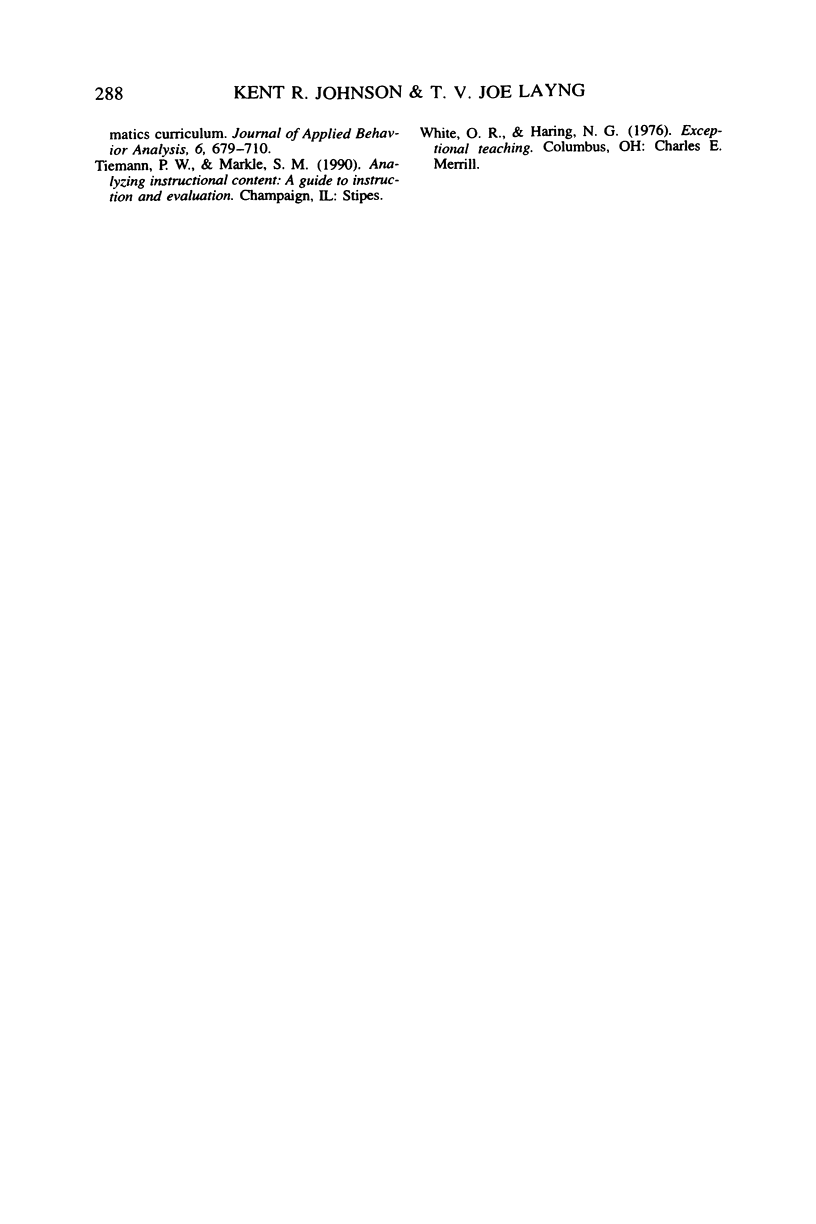
Selected References
These references are in PubMed. This may not be the complete list of references from this article.
- FERSTER C. B. The use of the free operant in the analysis of behavior. Psychol Bull. 1953 Jul;50(4):263–274. doi: 10.1037/h0055514. [DOI] [PubMed] [Google Scholar]
- Johnson K. R., Layng T. V. Breaking the structuralist barrier. Literacy and numeracy with fluency. Am Psychol. 1992 Nov;47(11):1475–1490. doi: 10.1037//0003-066x.47.11.1475. [DOI] [PubMed] [Google Scholar]
- Layng T. V., Andronis P. T. Toward a functional analysis of delusional speech and hallucinatory behavior. Behav Anal. 1984 Fall;7(2):139–156. doi: 10.1007/BF03391897. [DOI] [PMC free article] [PubMed] [Google Scholar]
- Resnick L. B., Wang M. C., Kaplan J. Task analysis in curriculum design: a hierarchically sequenced introductory mathematics curriculum. J Appl Behav Anal. 1973 Winter;6(4):679–709. doi: 10.1901/jaba.1973.6-679. [DOI] [PMC free article] [PubMed] [Google Scholar]


